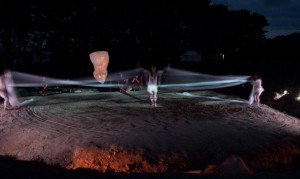Research shows sustainable design should look to indigenous concepts
 Ngā Pae o te Māramatanga, New Zealand’s Indigenous Centre of Research Excellence
Ngā Pae o te Māramatanga, New Zealand’s Indigenous Centre of Research Excellence
Research shows sustainable design should look to indigenous concepts
New research argues New Zealand could have had sustainable design principles for urban development in practice earlier if indigenous ideas had been considered. The findings are in the latest issue of AlterNative: An International Journal of Indigenous Peoples, published by Ngā Pae o te Māramatanga.
The paper by Drs Emily Voyde and Kepa Morgan “Identifying Commonalities Between Indigenous Values and Current Sustainable Design Concepts in Aotearoa New Zealand” shows that although there are similarities between indigenous values and current sustainable design concepts, these concepts were not developed from traditional Māori values. Indeed they may have been achieved sooner if indigenous knowledge had been considered.
Sustainable design principles are not the norm in New Zealand, although they are gaining mainstream acceptance as current methods are recognised as unsustainable for future generations. Māori have a traditional relationship with the ecosystem which has developed over centuries and remains important, says Dr Morgan.
“Indigenous peoples, such as Māori, have been typified as traditional peoples clinging to the past, rather than learning about and including mātauranga Māori (traditional Māori knowledge) in developing a sustainable urban design initiative suitable for New Zealand.
Many of currently utilised design principles such as onsite stormwater treatment, reduction in impervious surface area and promotion of infiltration devices are commonly attributed to imported “new” design paradigms, however they have been used already in New Zealand when design focused on Māori landowner values,” he says.
Another example is living roof technology, which highlights the parallels between current sustainable principles and traditional Māori values.
Dr Morgan says by combining traditional indigenous knowledge with Western science, “best practice” management can be created.
“By incorporating mātauranga Māori into urban design and development, another channel is opened to promote sustainable design where the intrinsic value and integrity of the ecosystem is considered in the design process without impeding urban development.”
AlterNative is a peer-reviewed interdisciplinary journal that aims to present indigenous worldviews from native indigenous perspectives. To read more about the latest issue (Volume 8, no. 2) and previous issues, visitwww.alternative.ac.nz
Ngā Pae o te Māramatanga (NPM) is a world-class Centre of Research Excellence consisting of 16 participating research entities and hosted by The University of Auckland. NPM conducts research of relevance to Māori communities and is an important vehicle by which New Zealand continues to be a key player in global indigenous research and affairs. Its research is underpinned by the vision to realise the creative potential of Māori communities and to bring about positive change and transformation in the nation and wider world. Visit www.maramatanga.ac.nz
loading...
loading...
Tags: Maori



Voices of our community